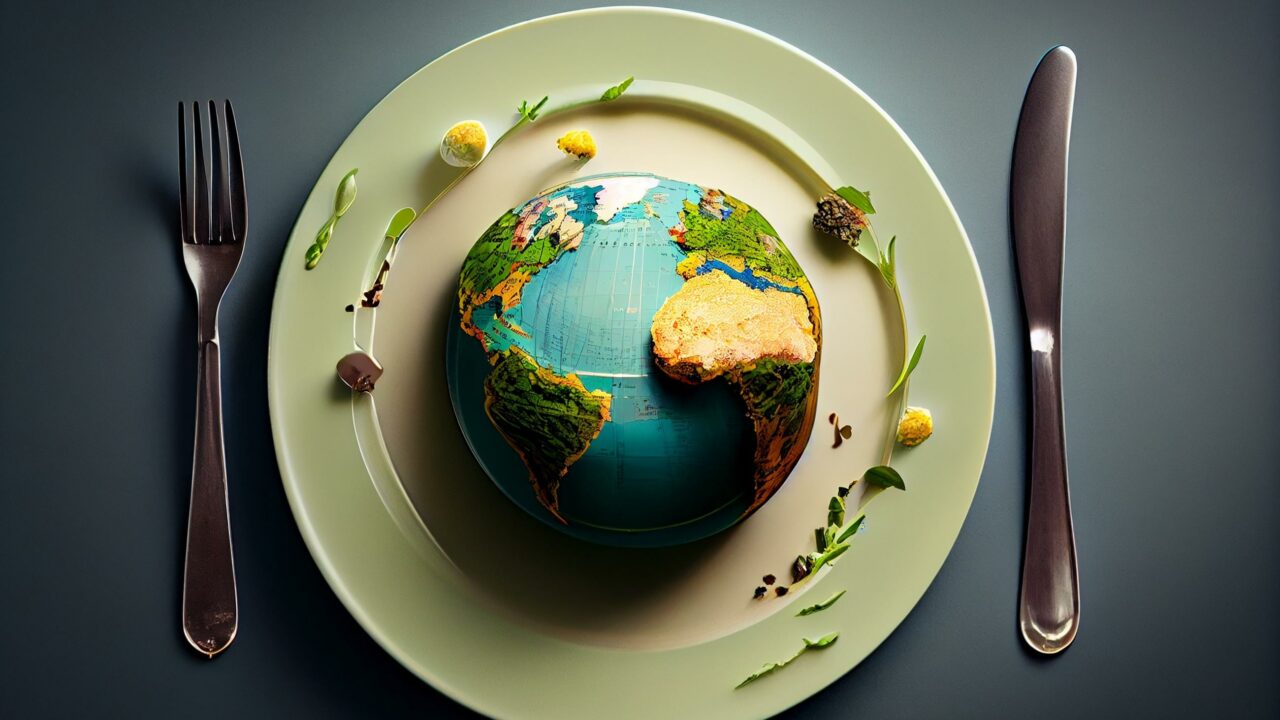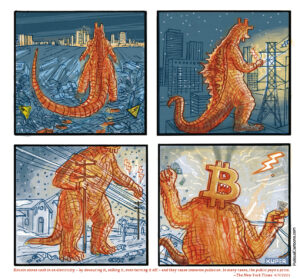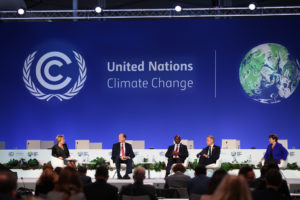What Is a Climavore?
More and more people are choosing a diet that is focused on reducing one's environmental footprint. Concerns about animal suffering and the climate both lead to a plant-based diet. Image: Adobe
Concerns about animal suffering and the climate both lead to a plant-based diet. Image: Adobe
More and more people are becoming climavores—a new kind of eater paying close attention to the impact of what they eat on the environment. While there may not be a definitive climavore food list or set of climavore recipes, the flexibility of the diet is gaining momentum. Instead of eschewing meat altogether, adherents of the climavore diet are choosing more options with a smaller environmental footprint. And now, the movement is beginning to draw the attention and marketing dollars of brands looking to capitalize on the climavore trend.
A growing chorus of food system and animal advocates are calling out animal agriculture industries for their latest “climate-friendly” marketing tactics. After all, the carbon footprint of virtually every animal-derived food is greater than its plant-based alternative, yet pork and chicken companies—and even low-methane beef brands—are all vying for climate-conscious consumers.
Let’s take a look at what a climavore is, what they should eat and the future of the movement.
A climavore is someone who does their best to eat according to the earth’s changing climate. Toward this end, most climavores will limit meat, eat a relatively large amount of fish and do their best to eat locally produced, fresh foods. However, unlike many other diets, there are no strict dietary guidelines that adherents follow.
Wherever you look, marketing claims surrounding the climate-friendliness and sustainability of products are unavoidable. That’s because this environmentally conscious style of eating and choosing foods is swiftly growing in popularity. In addition to climavores and climatarians, other diets following a similar ideology are also becoming more prominent. People labeling themselves as sustainatarians, reducetarians and even regenivores are popping up with increasing frequency.
With so many new and emerging ways of eating, climavores and climatarians are often lumped together. After all, both focus on reducing the environmental impact of what we eat instead of simply blacklisting certain foods. However, each of these diets has a unique origin story.
It’s not only individuals who are shifting their choices due to climavorism.
One of the earliest uses of the climavore dietary label started with an art and architectural project called Cooking Sections. Cooking Sections as a whole is described as a project that “examines the systems that organize the world through food.” Daniel Fernández Pascual and Alon Schwabe started the project in 2013, and since then, their artistic analysis of food systems evolved into the creation of the climavore diet.
Grounding Pascual and Schwabe’s work is the idea that the four seasons and the climate as a whole are changing—and that, as they change, human diets must adapt with them. Their analysis of food systems using color, construction, other visuals and several books was intended to inspire viewers to shift their consumption in ways that take into consideration nature, animals and, most significantly, the climate.
It’s not only individuals who are shifting their choices due to climavorism. Tate, a set of four museums in the UK and host to a climavore installation, removed farmed salmon from their menus at all locations permanently as a result of the exhibit.
The climatarian diet was first introduced by the non-profit, Climates Network, a “social network with a joint focus on the causes and effects of climate change.” The organization touts the diet as being for people “who want to take action on climate change in their daily life.”
Adherents are encouraged to adopt certain purchasing habits while acknowledging that it’s not “all or nothing” and that everyone should just “do what they can.” Some of the consumer behaviors encouraged by the founders of the diet include eating less meat, avoiding food waste and choosing seasonal foods.
Climavores and climatarians are often confused. After all, adherents of both diets consider environmental impact when they choose what they eat. Though similar, there is one difference: flexibility.
Climatarians are likely to create certain habits and stick to them. For example, they might only eat in-season produce, or only eat meat once a week. Climavores tend to be more flexible, adapting their diet to what is currently happening with the climate. For example, during a drought they would opt for produce that requires less water to grow.
Whereas vegans, vegetarians, Atkins and keto diets all have certain foods that are considered completely off-limits, climavores are more concerned with the impact of foods upon the environment.
For example, when selecting a protein, a climavore would likely stay away from beef and instead opt for fish, chicken or plant-based options. If they do consume higher emissions foods, adherents tend to opt for locally produced options in order to cut down on the greenhouse gasses released during transportation.
With that being said, there are still food system issues that being a climavore largely fails to address.
Critics of climavores argue that they should consider other factors, such as human and animal suffering, when making dietary decisions. They also argue that we already know what the most climate-friendly diet is: a plant-based diet.
Carbon tunnel vision is a hyperfocus on carbon while ignoring other pollutants. While on an individual level some climavores may fall victim to this way of thinking, the ideology itself does have a broader view.
With that being said, there are still food system issues that being a climavore largely fails to address.
Industrial agriculture is unavoidably tied to environmental destruction. Given this reality, you might assume that reducing animal suffering would be integral to a climavore’s consumption decisions. This is not always the case.
Climavores focus on the environment, meaning that while they may decide to reduce their meat consumption or eschew beef altogether, their reasons for doing so do not stem from concern for the wellbeing of animals.
The issues related to industrial agriculture span much further than simply negatively impacting the environment. The farms also represent an extremely dangerous place to work. On many farms, much of the staff are immigrants who may not even speak English, making safety training more difficult. Unfortunately, a strictly climavore ideology fails to recognize the human suffering attributable to agriculture.
One of the major criticisms of the climavore diet is that it simply might not be enough to combat climate change. Of course, opting to consume in ways that have a smaller impact on the environment is always a good thing, but the reality remains the same. In order to reach climate goals, meat consumption must significantly decrease, especially in the global west. Simply swapping beef burgers for turkey patties isn’t enough.
Given the flexibility and relative recency of eating specifically as a climavore, it’s unsurprising that there aren’t many recipes. Many adherents will simply choose any recipe, and use ingredients that are locally sourced or otherwise align with their ideology.
There is one cookbook put together as a collaboration between Climavore, ATLAS Arts and a class of high school students called Climavore: One Tidal Zones Recipe Book. The book uses “ingredients that respond to the new ecological challenges of Scottish waters.” With the marine focus of the book, it comes as no surprise that seaweed features heavily in the included recipes. Among its pages are recipes for seaweed oatcakes, crispy dulse tofu and seaweed pesto.
Chances are you’re already thinking about how your consumption patterns are impacting the environment.
The number of self-proclaimed climavores is growing, but the reality is that the ideology driving that growth is spreading far more quickly.
Everyone who considers the climate impact when they make dietary decisions isn’t calling themselves a climavore, but many of us are thinking about it. A 2023 survey of 1,000 U.S. consumers found that 42 percent of them think of the environment before making purchases. This data represents an increase of 18 percent in just one year.
Though you may not be ready to call yourself a climavore just yet, it’s likely that you think about the environment in some respect before making purchases. Perhaps you try to buy in-season food, buy eggs from a neighbor who owns chickens or avoid eating beef. If any of these things sound like you, congratulations: you’re thinking like a climavore.
Chances are you’re already thinking about how your consumption patterns are impacting the environment. Perhaps you’re just starting to realize the profound impact food has, or perhaps these considerations are nothing new to you. Regardless, as you continue to explore the world of climate-friendly eating, don’t fall victim to carbon tunnel vision and forget to consider how your choices impact not just the environment, but the animals and people who are behind all of the foods you eat.
Finally, consider embarking on a fully plant-based lifestyle, as it remains the most environmentally conscious diet.
Your support matters…Independent journalism is under threat and overshadowed by heavily funded mainstream media.
You can help level the playing field. Become a member.
Your tax-deductible contribution keeps us digging beneath the headlines to give you thought-provoking, investigative reporting and analysis that unearths what's really happening- without compromise.
Give today to support our courageous, independent journalists.






You need to be a supporter to comment.
There are currently no responses to this article.
Be the first to respond.